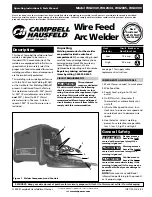
5
The Atmos 5.1 unit and the PSU should not be installed near units which produce
strong magnetic fi elds or extreme heat. Do not install the units directly above or
below power amplifi ers. Especially the ventilated PSU should be installed at a place
with suffi cient air circulation.
The ASM 5 has to be placed the way that the LCR heads of the microphone (those
closer to the microphone center/90° angle) are facing the sound source. Be sure to
place the microphone as high as necessary to avoid ground refl ections and comb
fi ltering effects. Usually the best position for the ASM 5 is right on the crossing
between the direct sound fi eld and the diffuse sound fi eld.
BEFORE switching on the PSU,
you have to connect the ASM 5 via the multicore lead
to the Atmos 5.1 unit. Pay attention to fi t the bayonet joints properly. Proceed in the
same way to connect the Atmos 5.1 unit to the PSU. Check that the voltage details
quoted on the PSU back panel correspond to your local mains electricity supply. Use
a minus (-) screwdriver to set the voltage selector to the required voltage.
By the way ... the PSU uses two 1,6 A slow fuses.
On the Atmos 5.1 unit, please check the positions of the ASM 5 Pattern Controls. We
recommend to start with the cardioid pattern characteristic for all fi ve microphones
(controls in center position).
Please check the position of the External Mic Input switches on the back panel of the
Atmos 5.1. If these switches are depressed, the corresponding channels of the ASM
5 are deactivated. Depress them only to activate external microphones connected to
the XLR inputs.
Now switch on the PSU.
Check the 9 LEDs on the front panel of the PSU. They indi-
cate that all 9 voltages are generated properly. Chassis ground and AC ground can
be disconnected with the Ground Lift switch (GND LIFT) on the back panel. This can
help to eliminate hum. An AC power cord is included to feed the IEC-spec, 3-prong
connector.
After switching in the PSU, proceed as follows:
1) Turn the Mic Gain of Channel 5 (master) control fully counter clockwise (0 dB).
2) Press the Channel Lock button at Channel 5 (all other channels follow automati-
cally to 0 dB).
3) Set the Master Mic Gain control to the 12 o’clock position (all other mic gain
controls follow precisely). Now the VU meters indicate modulation.
4) Set the Fader controls to the 0 dB position (used for monitoring only, see “Standard
Recording Setup“).
5) Press the Direct button on every channel to route the signal directly to the Master
and Monitoring Outputs.
6) In the Monitor section, set the control to the 12 o’clock position. The L/R switch
has to be activated for 5.1 monitoring.
Installation


































